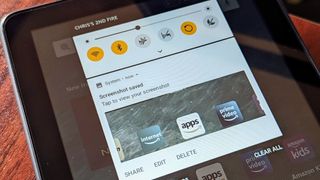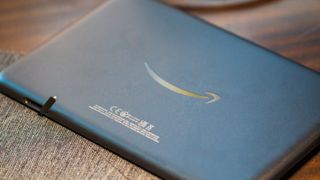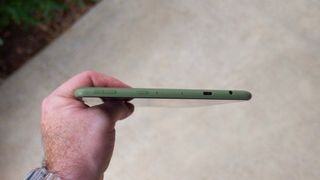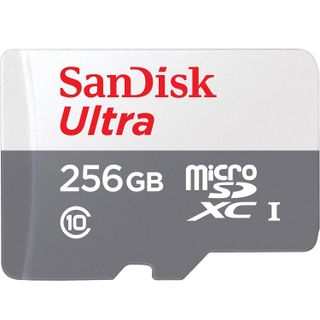Amazon Fire tablet: Which storage size should I buy?
Get the Fire tablet storage space you need by choosing the right option; here's how to choose.

Amazon Fire tablet: Which storage size should I buy?
Best answer: Your storage choice will depend on your needs, but remember that 32GB of storage will leave users with 25GB and a 64GB choice with 54GB in actuality. It's always best to have more storage space than you think you might need since apps and Fire OS can take up some of that space.
Which Fire tablet storage size should you buy?
When you buy an Amazon Fire tablet, it's important to know that the listed storage space differs from what users will end up using. It's different because there are apps and the FireOS, which are layered on top of the Android OS and will take up a good chunk of storage. The good news is that you have different storage options to choose from, so you always have more than enough storage space for all your books, movies, and other media files.
Now, you can look at your options, especially when considering a tablet with 16GB, 32GB, or 64 GB of storage. That low-end 16GB tablet will only give you about 12GB of usable storage. Depending on your plans for downloading games, movies, and other media, you'll want as much storage as possible. Even if it seems like more than what you would use, it's best to go for more storage since, over time, all the apps and updates will need that storage space.
The Fire HD 10 tablet comes in 32GB and 64GB variants, so spending a little extra to double the storage size is a no-brainer. It's also worth pointing out that Amazon updated its kid-friendly Amazon Fire devices. If 32GB seems right for your tech wizard, you can get the Fire 7 Kids Edition, which comes in 16GB and 32GB. You can also choose between the Fire HD 10 Kids and Fire HD 10 Kids Pro tablets, which offer the same storage space.

Things get trickier (and pricier) when you consider the newer Fire HD tablets. The Fire HD 8 model, which is still our pick for the best Amazon Fire tablet on the market right now, is available in 32GB and 64GB options, as are the Fire HD 8 Plus, Fire HD 10, and Fire HD 10 Plus. The 32GB size is quite a reasonable choice here, and depending on how you plan to use the tablet and the prevalence of media streaming services these days, you might not even need to opt for the 64GB variant.
Then there's the Fire Max 11, which comes in 64GB and 128GB storage sizes, the latter being the largest storage size ever offered in a Fire tablet. Apart from the usual things like media consumption, the Fire Max 11 is also intended for productivity-centric workflows. Even then, the 64GB option will be more than sufficient for basic needs.
Expand your Fire tablet's storage with a microSD card

The price tends to increase with storage capacity. However, if you opt for a device with less storage to save, don't worry—thanks to the versatile microSD slot, you always have the option to increase in size with a decent memory card. With the extra space, you can modify your device's storage to fit your needs.
A microSD slot is a reliable feature that you've always seen on the Fire tablets and still do in the newer models. With this slot, you can expand the capacity as much as you need. It can be a lifesaver when you unexpectedly need extra storage space.
Be an expert in 5 minutes
Get the latest news from Android Central, your trusted companion in the world of Android
When it comes to great deals on microSD cards for Fire tablets, we've got you covered with these great options. You can choose from options as little as 64GB or as much as 1TB. If you're an average user and want to have enough space, you can always go with the 256GB version. They usually go for about $25, but you can get fantastic deals on memory cards with Prime Day on July 16th at 12:01 am PDT through July 17th. You'll need to be a Prime member to get in on the deals, but Amazon does offer a 30-day free trial, and you can cancel anytime.

The ultimate storage upgrade
Made for your Amazon Fire tablet, this microSD card comes in six different storage capacities, ranging from 32GB-512GB. So, whether you're going on a long trip or need space for work, feel free to download all your games, music, images, videos, and a lot more on this hardcore memory card.

When Rajat got his first PC—a Pentium III machine with 128MB of RAM and a 56kbps dial-up modem—back in 2001, he had little idea it would mark the beginning of a lifelong love affair with gadgets. That fascination, combined with a penchant for writing and editing, ultimately led to him becoming a technology journalist. Some of Rajat's other interests include Photography, Hand Lettering, and Digital Typography. He's also somewhat obsessed with wrist-worn timepieces, and appreciates a Casio just as much as a Jaeger-LeCoultre.